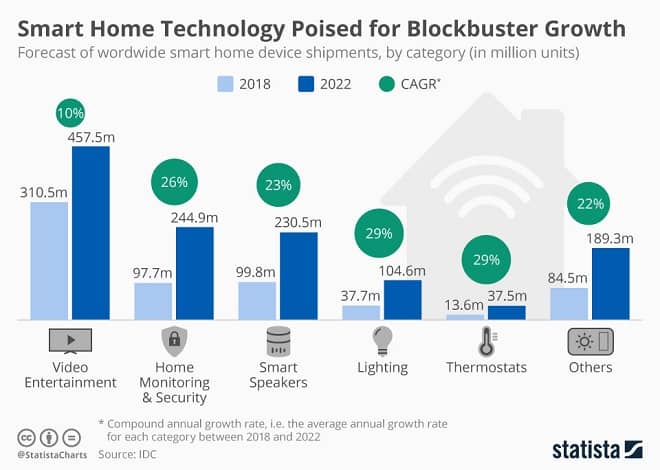RE/MAX National Housing Report on September 2018 MLS Data from 54 Metro Areas
Denver, CO – Oct. 16, 2018 (PRNewswire) The RE/MAX National Housing Report for September 2018 showed the trends of fewer closings and stabilizing inventory continued through September, punctuated by a surprisingly big 11.6% year-over-year drop in home sales. At the same time, the RE/MAX National Housing Report for September 2018 posted a Median Sales Price of $241,000 that marked the 30th consecutive month of year-over-year price increases. It is the highest September price in the 10-year history of the report. To access the housing report infographic, visit: https://rem.ax/2phKHWT.

The decline in home sales year-over-year was the largest since May of 2011, as September became the seventh month of 2018 to record lower sales than 2017. Even so, year-to-date 2018 home sales resemble 2017’s.
“The big drop in September closings catches your attention. The market is clearly rebalancing as buyers and sellers continue to process the increasing interest rate environment and what that means to them,” said RE/MAX CEO Adam Contos. “The slower drop in inventory – a visible trend for nearly half a year – further illustrates the ongoing shift toward market equilibrium, and that’s healthy in the long-term.”
Active inventory dropped for the 119th consecutive month, the decline of 4.7% from September 2017 was the smallest year-over-year decrease since August 2014. In addition, the September year-over-year inventory drop was the fifth consecutive month in 2018 to post single-digit percent declines rather than the double-digit monthly drops consistently seen over the previous three years.
“It’s a little surprising to see prices staying so strong, but it’s hardly shocking in such a tight market,” said Contos. “The headwinds of rising prices and interest rates amid already tight inventory levels have been crimping affordability and slowing sales for most of the year, but it varies by geography. In circumstances like these, where the market is tricky to navigate, both buyers and sellers can benefit by aligning themselves with a professional agent – a local expert who can cut through the noise and advocate on their behalf.”
Other highlights include:
- Home prices rose by 5.6% over September 2017, more than twice the year-over-year price increase of 2.3% from September 2016 to September 2017. That reversed a trend seen in the previous three months, when year-over-year price increases trailed 2017’s rate of growth.
- Months Supply of Inventory totaled 3.7, which is the second-lowest for September in report history, second only to 3.6 months in September 2017.
- Days on Market of 46 was a September record for the report – three days less than September 2017.
Closed Transactions
Of the 54 metro areas surveyed in September 2018, the overall average number of home sales is down 1.1% compared to August 2018, and down 11.6% compared to September 2017. Six of the 54 metro areas experienced an increase in sales year-over-year, including Orlando, FL, +17.2%, Tampa, FL, +8.5, Miami, FL, +6.8% and Birmingham, AL at +4.0%.
Median Sales Price – Median of 54 metro median prices
In September 2018, the median of all 54 metro Median Sales Prices was $241,000, down 3.2% from August 2018 and up 5.6% from September 2017. Only three metro areas saw a year-over-year decrease in Median Sales Price; Birmingham, AL, -2.1%, Anchorage, AK, -2.0% and Honolulu, HI, -1.7%. Seven metro areas increased year-over-year by double-digit percentages, with the largest increases seen in Boise, ID, +17.9%, Manchester, NH, +13.4% and Salt Lake City, UT, +11.9%.
Days on Market – Average of 54 metro areas
The average Days on Market for homes sold in September 2018 was 46, up three days from the average in August 2018, and down 3 days from the September 2017 average. The metro areas with the lowest Days on Market were Omaha, NE, at 19, San Francisco, CA, at 26, Seattle, WA, at 27, and five markets tied at 29 –Denver, CO, Cincinnati, OH, Indianapolis, IN, Las Vegas, NV, and Salt Lake City, UT. The highest Days on Market averages were in Augusta, ME, at 90, Burlington, VT, at 87, Hartford, CT at 81 and Miami, FL, at 79. Days on Market is the number of days between when a home is first listed in an MLS and a sales contract is signed.
Months Supply of Inventory – Average of 54 metro areas
The number of homes for sale in September 2018 was down 1.0% from August 2018 and down 4.7% from September 2017. Based on the rate of home sales in September, the Months Supply of Inventory increased to 3.7 from 3.0 in August 2018, and increased compared to September 2017 at 3.6. A 6.0-months supply indicates a market balanced equally between buyers and sellers. In September 2018, all but two of the metro areas surveyed – Miami, FL, at 8.0 and New York, NY, at 6.0 – reported a months supply less than 6.0, which is typically considered a seller’s market. The markets with the lowest Months Supply of Inventory are San Francisco, CA, at 1.9, Boise, ID, and Denver, CO, at 2.0 and Manchester, NH and Omaha, NE, tied at 2.3.
For specific data in this report or to request an interview, please contact newsroom@remax.com.
About the RE/MAX Network
As one of the leading global real estate franchisors, RE/MAX, LLC is a subsidiary of RE/MAX Holdings (NYSE: RMAX) with over 120,000 agents in more than 100 countries and territories. Nobody in the world sells more real estate than RE/MAX, as measured by residential transaction sides. Dedicated to innovation and change in the real estate industry, RE/MAX launched Motto Mortgage, a ground-breaking mortgage franchisor, in 2016 and acquired booj, a real estate technology company, in 2018. RE/MAX agents have lived, worked and served in their local communities for decades, raising millions of dollars every year for Children’s Miracle Network Hospitals® and other charities. To learn more about RE/MAX, to search home listings or find an agent in your community, please visit www.remax.com. For the latest news about RE/MAX, please visit www.remax.com/newsroom.
Description
The RE/MAX National Housing Report is distributed each month on or about the 15th. The first Report was distributed in August 2008. The Report is based on MLS data in approximately 54 metropolitan areas, includes all residential property types, and is not annualized. For maximum representation, many of the largest metro areas in the country are represented, and an attempt is made to include at least one metro from each state. Metro area definitions include the specific counties established by the U.S. Government’s Office of Management and Budget, with some exceptions.
Definitions
Transactions are the total number of closed residential transactions during the given month. Months Supply of Inventory is the total number of residential properties listed for sale at the end of the month (current inventory) divided by the number of sales contracts signed (pended) during the month. Where “pended” data is unavailable, this calculation is made using closed transactions. Days on Market is the number of days that pass from the time a property is listed until the property goes under contract for all residential properties sold during the month. Median Sales Price is the median of the median sales prices in each of the metro areas included in the survey.
MLS data is provided by contracted data aggregators, RE/MAX brokerages and regional offices. While MLS data is believed to be accurate, it cannot be guaranteed. MLS data is constantly being updated, making any analysis a snapshot at a particular time. Every month the RE/MAX National Housing Report re-calculates the previous period’s data to ensure accuracy over time. All raw data remains the intellectual property of each local MLS organization.
Like this:
Like Loading...


